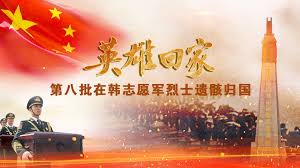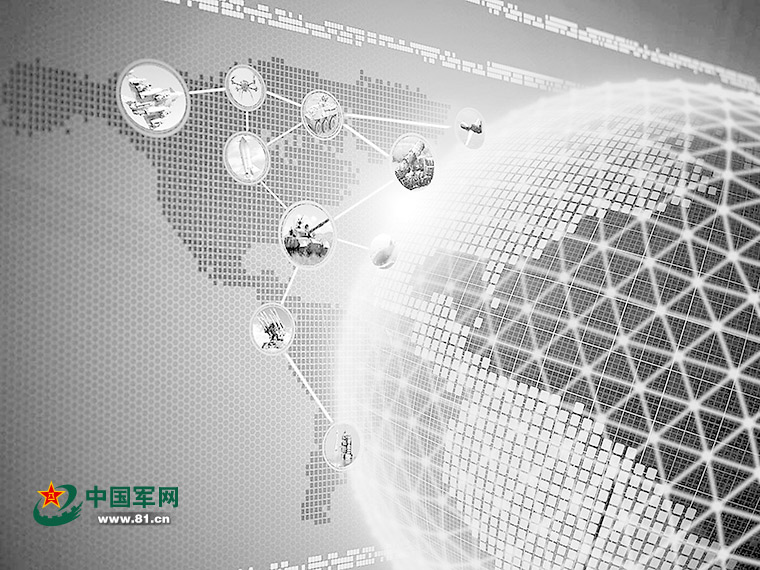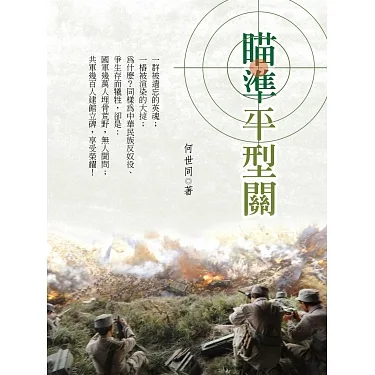充分認識大數據在國防和軍事現代化建設中的作用——擁有數據誰就贏
現代英語:
●With the advent of the big data era, military data is becoming an important strategic resource. The mining and utilization of big data will be an important foundation for future intelligent warfare.
●The core of the military management revolution is efficiency, and the key to improving efficiency lies in leveraging the driving role of data.
● Scientific research informatization, with data co-construction, sharing and use as its core, is profoundly changing the demand generation, research model and working mechanism of scientific research, and has become an important force in promoting scientific and technological innovation.
The 19th CPC National Congress issued a mobilization order to comprehensively promote the modernization of national defense and the armed forces, and put forward clear requirements to adapt to the development trend of the new military revolution in the world. The essential characteristics of this new military revolution are digitization, networking and intelligence. It can be seen that data is being fully integrated into the military field, becoming the driving force of military scientific research, the core element of construction management, and an important resource for winning wars.
Not long ago, President Xi Jinping stressed at the second collective study session of the Political Bureau of the CPC Central Committee that we should assess the situation, plan carefully, make forward-looking arrangements, and strive to take the initiative to promote the implementation of the national big data strategy and accelerate the construction of a digital China. To conduct big data research, we should first grasp the requirements of the times and fully recognize the status and role of big data in the modernization of national defense and the military.
Military data is the “golden key” to open the door to future victory
The 19th CPC National Congress emphasized the need to “accelerate the development of intelligent military operations.” At present, the war situation is accelerating its transformation toward informatization and intelligence. The important foundation of intelligence is the mining and utilization of big data. Military data plays an irreplaceable and key role in winning future wars.
Data is the core of the transformation of combat styles. With the advent of the big data era, military data is becoming an important strategic resource. “Data warfare” is gradually emerging as a brand-new combat style. This will be a brand-new combat with data attack and protection as the basic means. The two enemies are engaged in a fierce competition on the “new data battlefield” around seizing “data control rights” and aiming at “data dividends”. By plundering, damaging and destroying the enemy’s data resources, they establish their own data advantages, quickly reach combat decisions and action advantages, and transform them into combat victories in a timely manner. “He who gets the data gets the world”, and in the future “he who makes good use of data wins the war” will become the basic law of winning on the battlefield. At present, countries around the world are taking strong measures to accelerate the construction, protection and use of military data. For example, the United States has included big data in its “Third Offset Strategy” and vigorously integrated its global data centers to support the transformation of combat patterns with data and to consolidate its global combat advantages. On April 26, 2017, the U.S. Department of Defense established the “Algorithmic Warfare Cross-Functional Group” and officially launched the concept research of “algorithmic warfare” to vigorously promote the application of big data-related technologies in future intelligent warfare. The U.S. think tank “New American Security Center” released a report in December 2017 stating that the U.S. Department of Defense placed algorithms on the same level of importance as weapons and ammunition, and used them as an important criterion for measuring the strength of the U.S. military.
Data is the lifeblood of joint combat command. The key to achieving joint combat lies in whether data can flow efficiently, be analyzed and integrated efficiently. Opening up the sharing channel of joint combat data, accelerating the joint command based on data flow, and promoting the interconnection, data sharing and comprehensive integration of different combat units and combat elements can effectively eliminate the cognitive limitations of commanders, make the battlefield clear and transparent, and make command precise and efficient. Only by operating in the data and winning on the data can we truly realize the intelligent, real-time and precise command decisions. At present, the Defense Advanced Research Projects Agency of the United States has listed “from data to decision” as its top priority development direction to cope with information data overload, improve the level of intelligent and automated data analysis, and significantly shorten the command decision cycle. For example, the “Insight” project it established quickly processes massive amounts of complex data from different sensors and integrates them into a battlefield situation map, helping commanders to efficiently analyze combat intelligence and target data, providing effective support for joint combat decision-making.
Data is the cornerstone of building an intelligent battlefield. The battlefield of the future will be highly intelligent, with weapons and equipment, support systems, battlefield communication and information systems, etc., and data is an important foundation for intelligence. Weapon platforms, firepower systems, information systems and even combat personnel are integrated through big data and machine learning technology to form a highly intelligent combat system. Based on big data technology, unmanned systems will become an important combat force in the future; autonomous perception, autonomous analysis, autonomous decision-making, and autonomous strikes based on data will replace energy mobility with information mobility and become the key factor for victory; through the mining and utilization of massive data, the efficiency and intelligence level of battlefield support will be greatly improved. The “Third Offset Strategy” currently being implemented by the U.S. military proposes to focus on the development of key technical fields such as machine learning, human-machine collaboration, human combat action assistance systems, and advanced manned/unmanned combat formations. All of these are centered on big data and artificial intelligence technologies and aim to enhance the intelligence level of weapons and equipment and information systems.
Military data is an important core to stimulate the revolution of military management
The report of the 19th CPC National Congress proposed to “advance the revolution in military management, improve and develop the socialist military system with Chinese characteristics.” With the continuous improvement of human social productivity and scientific and technological levels, the ideas, systems, mechanisms, methods and means of military management will inevitably change. Every epoch-making innovation in science and technology and production methods, and every profound change in military organization and military theory will give birth to and trigger a corresponding revolution in military management. In the information age, the core of the military management revolution is efficiency. The key to improving efficiency lies in giving play to the driving role of data and focusing on improving the professionalization, refinement and scientificization of military management.
Data drives the change of military management concepts. The military management revolution emphasized by President Xi Jinping is primarily about establishing modern management concepts. Both Deming, the master of quality management, and Drucker, the father of modern scientific management, have said: “You can’t manage without quantification.” Data is the foundation of modern management concepts and the foundation for achieving fine management. The use of data analysis can accurately identify military management problems and provide a basis for reforming the military management system and improving the effectiveness of military management. Decisions based on experience will be increasingly replaced by full-sample decisions based on big data. Only by firmly establishing the management concept of “speaking with data, making decisions with data, managing with data, and innovating with data” can we effectively promote the military management revolution with efficiency as the core.
Data drives the modernization of the military organization. The report of the 19th CPC National Congress proposed to “advance the modernization of the military organization in an all-round way”. In the era of big data, the military organization is gradually changing from a linear mode dominated by processes to a flat network mode centered on data, showing characteristics such as multi-subject coordination, multi-process penetration, and high-frequency information interaction. Using data flow to lead the integrated development of information flow and resource flow, and realizing the transformation of the military organization from a “tree-like” to a “network-like” form, can promote the optimization of the design of military organizations, the efficiency of command processes, and the scientific allocation of power and responsibility. For example, the information system developed by the United States in accordance with the unified requirements of the Department of Defense system structure framework collects and analyzes relevant data in real time, and optimizes management processes through relationships such as data and capabilities, thereby ensuring the orderly operation of the Department of Defense.
Data drives the transformation of military management methods. President Xi Jinping has repeatedly stressed the need to improve the level of professional, refined, and scientific management of the military. Under the new military construction and management system, the CMC has established 15 departments, and the requirements for management decisions are getting higher and higher. There is an urgent need to integrate military data at all levels, both macro and micro, and to dynamically display the military management process, elements, and links in a panoramic manner. By analyzing the trends of data and information flows, continuously optimizing the management system and operating mechanism, and promoting the transformation of military management from an “art” based on experience to a “science” based on data, it will provide new ideas, methods, and paths for effectively handling complex and large-scale system problems in military management, and will greatly improve the effectiveness of military management.
Military data is a strong support for military scientific research and innovation
President Xi Jinping stressed the need to closely integrate military theory with military technology and innovate the military scientific research work model. At present, scientific research informatization with data co-construction, sharing and use as the core is profoundly changing the demand generation, research model and work mechanism of scientific research, and has become an important force in promoting scientific and technological innovation. In the military field, data research will also play an increasingly important role.
Leading the direction of military scientific research. At present, the pertinence and scientific nature of our military scientific research projects need to be improved. Using big data technology to integrate and mine various information data at home and abroad, inside and outside the military, can not only timely discover our shortcomings and weaknesses, but also comprehensively perceive and analyze the current status of military science and technology development in major countries, quickly capture research hotspots, predict development trends, identify potential disruptive technologies and fog traps, provide guidance for scientific project establishment, and promote major changes in the military scientific research demand generation model. For example, the “Technology Tracking and Horizon Scanning” project implemented by the Office of Technical Intelligence of the U.S. Department of Defense in 2011 uses big data technology to comprehensively perceive and deeply analyze global scientific and technological activities, analyze advantages and gaps, and thus guide future scientific research directions and priorities.
Transform the military research paradigm. In 2007, Jim Gray, winner of the Computer Turing Award, proposed that human scientific research activities have gone through the “experimental science paradigm” at the beginning of the development of science and technology, the “theoretical science paradigm” characterized by models and induction, and the “computational science paradigm” characterized by simulation, and are currently shifting to the “data science paradigm” characterized by big data analysis. Under this research paradigm, big data and artificial intelligence will be fully and deeply embedded in military scientific research. In the past, scientific conclusions that could only be obtained through experiments or simulations will be able to discover unknown laws, mine hidden information, and capture valuable knowledge through the analysis and mining of massive data in the future, thereby subverting the traditional military scientific research model and mechanism, forming a new military scientific research paradigm, and greatly improving research efficiency.
Promote the in-depth development of the integration of theory and technology. For a long time, how our military’s military theoretical research and military technical research can complement each other has always been a “difficult problem”. Theoretical research lacks the support of advanced technology, and technical research lacks the guidance of military theory. After the adjustment and reform, the barriers between military theoretical research and military technical research have been broken down from the institutional perspective. However, to truly achieve the deep integration of the two, it is necessary to open up the information data flow of the integration of theory and technology through the comprehensive sharing and efficient interaction of military data, build the underlying channel of the integration of theory and technology, effectively change the past binary separation situation, and make data sharing an important breakthrough for the integration of theory and technology in military scientific research. (Liu Linshan)
(Author’s unit: Military Science Information Research Center, Academy of Military Science)
現代國語:
要點提示
●隨著大數據時代的到來,軍事數據正成為舉足輕重的戰略資源,未來智慧化戰爭的重要基礎就是大數據的挖掘與利用。
●軍事管理革命的核心是效能,而提高效能的關鍵在於發揮數據的驅動作用。
●以數據共建、共享、共用為核心的科學研究資訊化,正在深刻改變科研的需求生成、研究模式與工作機制,成為推動科技創新的重要力量。
黨的十九大發出全面推進國防和軍隊現代化建設的動員令,提出適應世界新軍事革命發展趨勢的明確要求。正在進行的這場新軍事革命的本質特徵是數字化、網絡化和智能化。可以看到,數據正全面融入軍事領域,成為軍事科研的驅動力量、建設管理的核心要素、戰爭制勝的重要資源。
前不久,習主席在中共中央政治局第二次集體學習時強調,要審時度勢、精心謀劃、超前佈局、力爭主動,推動實施國家大數據戰略,加快建設數字中國。進行大數據研究,首先應掌握時代要求,充分認清大數據在國防和軍隊現代化建設中的地位作用。
軍事數據是開啟未來制勝之門的“金匙”
黨的十九大報告強調,「加速軍事智能化發展。」當前,戰爭形態正加速向資訊化、智慧化轉變。智慧化的重要基礎是大數據的挖掘利用,軍事數據在打贏未來戰爭中具有不可取代的關鍵作用。
數據是作戰樣式轉變的核心。隨著大數據時代的到來,軍事數據正成為舉足輕重的戰略資源,「數據戰」作為一種嶄新的作戰樣式逐步顯現,這將是一種以數據攻擊與防護為基本手段的全新作戰。敵對雙方圍繞奪取“制數據權”,瞄準“數據紅利”,在“數據新戰場”上展開激烈爭奪,通過掠奪、破壞和摧毀敵方數據資源,建立己方的數據優勢,快速達成作戰決策及行動優勢,並將其適時轉化成作戰勝勢。 “得數據者得天下”,未來“善用數據者贏得戰爭”將成為戰場制勝的基本規律。當前,世界各國正採取有力舉措,加速對軍事數據的建設、保護和使用。以美國為例,已將大數據列入其“第三次抵消戰略”,並大力整合其全球數據中心,以數據支撐作戰樣式轉變,極力鞏固其全球作戰優勢。 2017年4月26日,美國國防部成立“演算法戰跨職能小組”,正式啟動“演算法戰”概念研究,旨在大力推動大數據相關技術在未來智能化戰爭中的應用。美國智庫「新美國安全中心」2017年12月發布報告稱,美國防部將演算法擺在了與武器彈藥同等重要的地位,並將其作為衡量美軍力量的重要標準。
數據是聯合作戰指揮的血液。實現聯合作戰的關鍵在於數據能否高效流動、高效研判、高效融合。打通聯合作戰數據的共享通道,加速推進以數據流為紐帶的聯合指揮,促進不同作戰單元和作戰要素的互聯互通、數據共享和綜合集成,可有效消除指揮員的認知局限,使戰場變得清晰透明、指揮變得精準高效,只有運籌於數據之中、決勝於數據之上,才能真正實現指揮決策的智慧化、即時化、精準化。目前,美國國防高級研究計劃局已將「從數據到決策」列為其最優先發展方向,以應對資訊數據過載,提高數據分析智慧化、自動化水平,大幅縮短指揮決策週期。如其設立的「洞察」項目,透過快速處理來自不同傳感器的海量復雜數據,並整合到戰場態勢圖上,協助指揮員高效分析作戰情報、目標數據,為聯合作戰決策提供有效支撐。
數據是構建智慧化戰場的基石。未來戰場將是高度智慧化的,武器裝備、保障體系、戰場通訊資訊系統等都是智慧化的,而智慧化的重要基礎就是數據。武器平台、火力系統、資訊系統乃至作戰人員,透過大數據、機器學習技術融為一體,形成了高度智慧化的作戰體系。基於大數據技術,無人系統將成為未來的重要作戰力量;以數據為中樞的自主感知、自主分析、自主決策、自主打擊,將使資訊機動性取代能量機動性,成為製勝的關鍵要素;通過對海量資料的挖掘與利用,戰場保障的效率與智慧化程度將大幅提升。美軍正在實施的“第三次抵消戰略”,提出要重點發展機器學習、人機協作、人類作戰行動輔助系統、先進有人/無人作戰編隊等關鍵技術領域,無一不是以大數據和人工智能技術為核心,旨在提升武器裝備和資訊系統的智慧化程度。
軍事數據是激發軍事管理革命的重要內核
黨的十九大報告提出,「推進軍事管理革命,完善和發展中國特色社會主義軍事制度。」隨著人類社會生產力和科技水平的不斷提高,軍事管理的思想理念、體制機制、方法手段必然會發生變化。科學技術和生產方式的每一次劃時代創新,軍事組織和軍事理論的每一次深刻變革,都會催生和引發相應的軍事管理革命。資訊時代,軍事管理革命的核心是效能。提高效能的關鍵在於發揮數據的驅動作用,著力提升軍事管理的專業化、精進、科學化程度。
數據驅動軍事管理理念變革。習主席強調的軍事管理革命,首要的是樹立現代管理理念。品質管理大師戴明與現代科學管理之父德魯克都曾提出:「不會量化就無法管理」。數據是現代管理理念的基礎,也是實現精細管理的基礎。運用數據分析,可準確找出軍事管理問題,為改革軍事管理制度、提升軍事管理效能提供依據。基於經驗的決策,將越來越多地被基於大數據的全樣本決策所取代。只有穩固樹立「用數據說話、用數據決策、用數據管理、用數據創新」的管理理念,才能有效推進以效能為核心的軍事管理革命。
數據驅動軍隊組織形態現代化。黨的十九大報告提出,「全面推進軍隊組織形態現代化」。在大數據時代,軍隊組織形態正從以流程為主的線性方式逐漸向以數據為中心的扁平化網絡方式轉變,呈現出多主體協調、多流程滲透、資訊高頻互動等特徵。以數據流引領資訊流、資源流的整合發展,實現軍隊組織形態從「樹狀」轉變為「網狀」,能夠推動軍隊組織機構設計優化、指揮流程高效化、權責配置科學化。例如,美國按照國防部體系結構架構統一要求,開發的資訊系統即時採集和分析相關數據,並透過數據與能力等關聯關系,對管理流程進行優化,從而確保了國防部有序運作。
數據驅動軍事管理方式轉變。習主席多次強調,要提升軍隊專業化、精進、科學化管理水準。在新的軍隊建設管理體制下,軍委成立了15個部門,對管理決策的要求越來越高,迫切需要整合宏觀和微觀各個層次的軍事數據,全景式動態展示軍事管理流程、要素和環節。通過對數據流、資訊流的態勢研判,不斷優化管理體制和運行機制,推動軍事管理從依靠經驗的“藝術”轉變為依靠數據的“科學”,為有效處理軍事管理復雜巨系統問題提供新思路、新方法和新途徑,將大幅提升軍事管理效能。
軍事數據是軍事科學研究創新的強力支撐
習主席強調指出,要堅持軍事理論和軍事科技緊密結合,創新軍事研究工作模式。當前,以數據共建、共享、共用為核心的科學研究資訊化,正深刻改變科學研究的需求產生、研究模式和工作機制,成為推動科技創新的重要力量。在軍事領域,數據研究也將發揮越來越重要的作用。
引領軍事科學研究方向。目前,我軍科研立項的針對性和科學性還有待提高。採用大數據技術,對國內外、軍內外各類資訊數據進行綜合整合和挖掘分析,不僅可以及時發現我們的短板和弱項,還可以全面感知和分析主要國家軍事科技發展現狀,迅速捕捉研究熱點,預測發展趨勢,識別潛在的顛覆性技術和迷霧陷阱,為科學立項提供引領,推動軍事科學研究需求產生模式發生重大轉變。例如,美國防部技術情報辦公室從2011年開始實施的「技術追蹤與地平線掃描」項目,運用大數據技術對全球科學技術活動進行全面感知和深入研判,分析優勢差距,從而引領未來科研方向和重點。
轉變軍事科學研究範式。 2007年,計算機圖靈獎得主吉姆·格雷提出,人類科研活動歷經科學技術發展之初的“實驗科學範式”、以模型和歸納為特徵的“理論科學範式”、以模擬仿真為特徵的“計算科學範式”,目前正在轉向以大數據分析為特徵的“數據科學範式”。在這種研究範式下,大數據和人工智慧將全面深度嵌入軍事科研工作,以往通過實驗或模擬模擬等方式才能獲取的科學結論,未來透過分析挖掘海量數據就能夠發現未知規律、挖掘隱藏資訊、捕獲有價值知識,從而顛覆傳統的軍事研究模式和機制,形成新的軍事科學研究範式,研究效率也將大幅提升。
推動理技融合深度發展。長期以來,我軍軍事理論研究和軍事技術研究如何相互借力補台一直是“老大難”,理論研究缺乏先進技術支撐,技術研究缺乏軍事理論牽引。調整改革後,從體制上打破了軍事理論研究和軍事技術研究的壁壘,但要真正實現二者的深度融合,必須通過軍事數據的全面共享和高效交互,打通理技融合的信息數據流,構建理技融合的底層通道,有效改變過去二元分立的局面,使數據共享成為軍事科研理技融合「落一子而全盤活」的重要突破口。 (劉林山)
(作者單位:軍事科學院軍事科學資訊研究中心)
——充分認清大數據在國防和軍隊現代化建設中的作用
來源:解放軍報 作者:劉林山 責任編輯:喬楠楠 2018-02-01 09:11:27














